In today’s fast-paced world, being able to sync documents across all your devices is a game changer for collaboration. It allows you to access your files anytime and anywhere, making work easier and more efficient. This article will explore the benefits of syncing documents, how to choose the right tools, and ways to overcome challenges in document synchronization.
Key Takeaways
- Syncing documents helps save time and reduce clutter by eliminating the need for paper.
- Access your files from anywhere, making it easy to work on the go or during travel.
- Choosing the right tools and setting up security measures ensures your documents stay safe and organized.
Why Syncing Documents is a Game Changer
When it comes to managing your documents, syncing is like having a magic wand that makes everything easier. No more searching through piles of papers or worrying about losing important files! With document syncing, you can access your files from anywhere, anytime, and on any device. It’s like having your office in your pocket!
No More Paper Jams: The Eco-Friendly Choice
Let’s face it, paper is so last century. By going digital, you’re not just saving trees; you’re also saving yourself from the headache of paper jams and clutter. Here’s why you should ditch the paper:
- Less clutter: Your workspace will thank you.
- Easy access: Find what you need in seconds.
- Eco-friendly: Save the planet, one document at a time.
Access Anytime, Anywhere: The Freedom of Mobility
Imagine being able to pull up your important documents while lounging on the beach or waiting for your coffee. With synced documents, that’s a reality! You can:
- Access files from your phone, tablet, or laptop.
- Collaborate with your team in real-time.
- Never worry about forgetting a file at home.
Secure and Sound: Keeping Your Documents Safe
Worried about losing your files? Fear not! Syncing your documents means they’re backed up and secure. Here’s how:
- Automatic backups: Your files are saved automatically, so you don’t have to lift a finger.
- Encryption: Your data is protected from prying eyes.
- Access control: You decide who can see what.
Syncing documents isn’t just a convenience; it’s a game changer for how you work and collaborate. Embrace the future and watch your productivity soar!
Choosing the Right Tools for Document Syncing

When it comes to syncing documents, picking the right tools can feel like searching for a needle in a haystack. But don’t worry, I’ve got your back! Here’s how to navigate this tech jungle with ease.
Cloud vs. Local: Finding Your Perfect Match
- Cloud storage is like having a magic backpack; you can access your documents from anywhere!
- Local storage is more like a treasure chest; it’s secure but only available at home.
- Consider your needs: Do you travel a lot? Go cloud! Prefer to keep things close? Local is your friend.
Tagging and Naming: The Art of Organization
- Naming conventions are your best buddies. Use clear, descriptive names for your files.
- Tagging helps you find things faster. Think of it as giving your documents a GPS!
- Here’s a quick list to get you started:
- Use dates in file names (e.g.,
2023-10-01_Project.docx). - Include keywords that describe the content.
- Keep it simple and consistent.
- Use dates in file names (e.g.,
Security Protocols: Keeping Your Data Safe
- Security is key! Make sure your chosen tool has strong encryption.
- Regularly update your passwords and use two-factor authentication.
- Here’s a quick table to compare some popular tools:
| Tool | Cloud/Local | Encryption | Two-Factor Auth |
|---|---|---|---|
| Google Drive | Cloud | Yes | Yes |
| Dropbox | Cloud | Yes | Yes |
| OneDrive | Cloud | Yes | Yes |
| External HDD | Local | No | No |
Remember, keeping your documents safe is not just about choosing the right tool; it’s about using it wisely! Stay smart and secure!
Overcoming Challenges in Document Synchronization
Converting to Digital: A Step-by-Step Guide
Switching from paper to digital can feel like trying to teach your dog to fetch a stick in a swimming pool. But don’t worry! Here’s a simple guide to help you dive in:
- Assess Your Needs: What documents do you need to digitize? Prioritize the important ones.
- Choose Your Tools: Pick a reliable cloud service that suits your needs. Think about accessibility and security.
- Start Scanning: Use a scanner or a scanning app to convert your documents into digital files.
- Organize: Create a folder structure that makes sense to you. Tagging files can help you find them later.
Training Your Team: Getting Everyone on Board
Getting your team to embrace new tech can be like herding cats. Here’s how to make it easier:
- Hold Training Sessions: Teach your team how to use the new tools effectively.
- Create Easy Guides: Make simple, step-by-step guides for common tasks.
- Encourage Feedback: Let your team share their thoughts on the new system. This can help you improve the process.
Troubleshooting Common Syncing Issues
Even the best systems can have hiccups. Here’s how to tackle common problems:
- Check Your Internet Connection: A weak connection can cause syncing issues.
- Update Your Software: Make sure you’re using the latest version of your tools.
- Contact Support: If all else fails, don’t hesitate to reach out for help.
Remember, the key to successful document synchronization is communication and organization. Keep your team informed and your files tidy, and you’ll be on your way to seamless collaboration!
Maximizing Productivity with Synced Documents

Real-Time Collaboration: Working Together Seamlessly
Imagine this: you and your team are working on a project, and instead of sending endless emails back and forth, you’re all in the same document at the same time. With tools like Microsoft 365, you can do just that! You can see changes as they happen, chat in real-time, and make decisions faster than ever. It’s like having a virtual meeting without the awkward small talk.
Automating Your Workflow: Let Technology Do the Heavy Lifting
Why do the heavy lifting when technology can do it for you? Automate repetitive tasks like document sharing and updates. Set reminders for deadlines and let your tools handle the rest. This way, you can focus on what really matters—like perfecting your coffee-making skills for those long workdays. Here’s a quick list of tasks you can automate:
- Sending reminders for upcoming deadlines
- Sharing documents with team members
- Updating project statuses
Saving Time and Money: The Efficiency Boost
Let’s face it, time is money. By syncing your documents, you save both! No more searching through endless email threads or outdated files. Everything you need is just a click away. Plus, with tools like OneDrive, you can easily store, share, and sync files, ensuring that everyone has access to the latest documents. This eliminates the hassle of email chains and keeps your team on the same page.
Syncing documents isn’t just about convenience; it’s about creating a culture of efficiency and collaboration that can propel your team to new heights!
Wrapping It Up: The Future of Document Management
So there you have it! Syncing your documents across all your devices isn’t just a fancy tech trick; it’s a game-changer for how we work together. Imagine never having to dig through piles of papers or frantically searching for that one file you need. With everything stored online, you can access your documents anytime, anywhere—whether you’re lounging on the couch or sipping coffee at a café. Plus, it’s good for the planet since you’re cutting down on paper waste. Sure, there might be a few bumps along the way, like figuring out the best system for your needs, but the benefits far outweigh the challenges. So, why not give it a shot? Your future self (and your team) will thank you for it!
Frequently Asked Questions
What are the benefits of syncing documents across devices?
Syncing documents lets you access your files from anywhere, making it easier to work on the go. It also saves paper, keeps your documents safe, and helps everyone in your team find what they need quickly.
How do I choose the best tool for document syncing?
To find the best syncing tool, think about whether you want to use cloud storage or keep files on your computer. Look for features like easy tagging and good security to protect your data.
What challenges might I face when syncing documents?
Some challenges include getting your team used to new technology, converting old paper documents to digital files, and solving any issues that come up while syncing.







